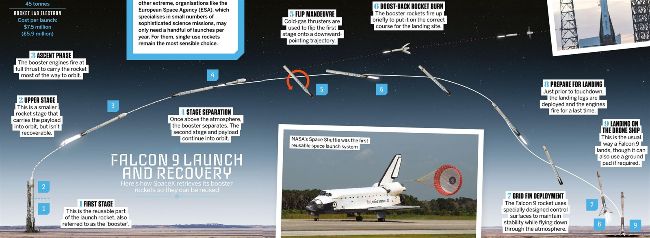HOW REUSABLE ROCKETS WORK
New launch vehicles that can fly multiple missions are transforming space travel
WORDSANDREW MAY

© Alamy / Getty / NASA / SpaceX
Imagine if an airliner only lasted a single journey and a new one had to be built for every single flight. It may sound crazy, but in the world of spaceflight, this ‘single-use’ approach is a well-established practice. The first rockets to launch humans into orbit back in the 1960s were converted military missiles, so it’s no surprise they were designed for just one flight each. For space operators like NASA, however, the result was painfully expensive. Adjusted to modern prices, the cost of putting a payload into orbit using one of those early rockets was around $30,000 (£23,700) per kilogram. The obvious solution was to make space launchers reusable, and NASA came up with just such an approach that it believed would drastically reduce launch costs. This was the Space Shuttle, which first flew in 1981.